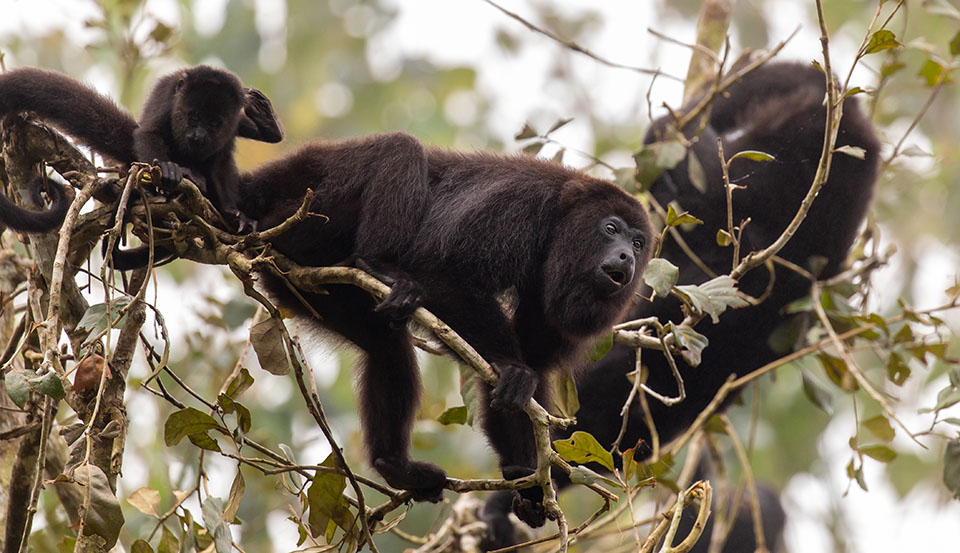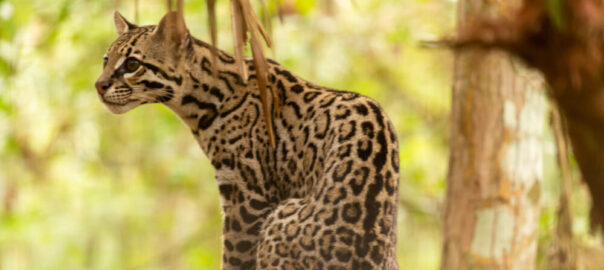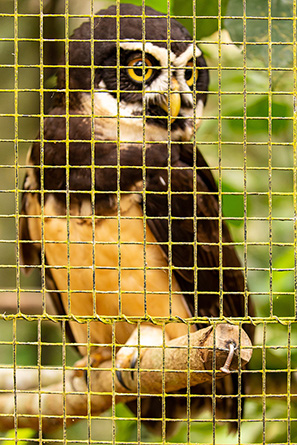By James Diedrick
Posted April 9, 2022
Photos this page © by James Diedrick
Our Global Journeys: Belize group stayed overnight at the Tropical Education Center on March 11 and visited the nearby Belize Zoo that evening and the next morning–nearly one year since the founder of both, Sharon Matola, died in Belmopan (on March 21). An American expatriate (who became a naturalized citizen in 1990), she had moved to Belize in 1981, invited there by British filmmaker Richard Foster. He had heard of her skills with wild animals (she had previously worked as a lion tamer, though at the time she was pursuing a master’s degree in mycology in Florida). Foster was working on a National Geographic nature documentary in Belize, where he lived on a compound about 30 miles inland. After filming wrapped, he left Belize for another film project (in Borneo) and gave Ms. Matola a jaguar, two macaws, a 10-foot boa constrictor and 17 other half-tamed animals to caretake. As she told The Washington Post in 1995. “I was at a crossroads. I either had to shoot the animals or take care of them, because they couldn’t take care of themselves in the wild.” The result is the most popular attraction in Belize, one that attracts thousands of school children each year, and almost as many American and European tourists.
During our nighttime walk through the zoo, staff members accompanied two groups from our class (12 in each group), pointing out to us (and at times letting us feed) the elusive jaguar, the spectacled owl, American and Morelet’s crocodiles, and the tapir. Our guide explained to our group why many of these animals are endangered, and what the zoo is doing to educate visitors about conservation efforts, ranging from raising awareness about rain forest destruction to attempting to discourage Belizean citizens from eating such endangered species as the green iguana.
Although the zoo is now widely embraced in Belize, it wasn’t always so. As Bruce Barcott writes in the best book about Sharon Matola, The Last Flight of the Scarlet Macaw, her opposition to a hydropower dam on the Macal River led government supporters of the dam to accuse her of “environmental imperialism” and portray her and her allies (which included the Natural Resources Defense Council and the International Union for Conservation of Nature) as foreign invaders. As government spokesman Norris Hall wrote in the Belize Times,
Our friends from abroad should understand that while they are welcomed as partners in our development, any attempt at neo-colonialism or long-range attempts to meddle in what we intelligently consider sustainable development will not be tolerated (qtd. in Barcott, p. 159).
The Canadian electric company Fortis (with Chinese participation) eventually won the right to build the dam in court, but Ms. Matola was proven right in her claims that energy costs would be higher, not lower, after the dam’s construction, and that the area around the damn would become polluted, endangering both wildlife and human communities.
On the morning of March 12, we returned to the zoo to see those creatures more active during daylight hours–scarlet macaws, coatimundi, and the remarkable harpy eagle, and black howler monkeys, among others.

Seeing (and hearing) the magnificent howler monkeys reminded me of my friend and colleague Randy Malamud, and his 1998 polemic against zoos (Reading Zoos: Representations of Animals and Captivity, New York University Press). He rightly notes that, especially in England and America, zoos are implicated in an imperialist ideology of domination and control of the natural world.
“Zoos are not a microcosm of the natural world but an antithesis to it” (p. 30), Malamud writes, mirroring the relationship between human cultures and the natural world rather than relationships within the natural world. Further, since zoos are part and parcel of “the forces that created Blockbuster Video and Disney World, Mall of America and Pizza Hut as our cultural venues,” they are destructive of the natural world that they pretend to portray (p. 34). Zoos thus work to obscure both the impending “geocide” of whole species and the fundamental connection between humans and other animals.
Yes, but. Zoos such as the one in Belize also serve to save wounded animals from certain death in the wild, and while admittedly restricting their freedom they educate visitors about the need to preserve those wild spaces where these creatures can thrive. Seeing these magnificent creatures, even in captivity, inspire wonder–and ideally a commitment to preservation.
Even Malamud acknowledges this. In a discussion of Rainer Maria Rilke’s poem “The Flamingos,” Malamud comments that Rilke is “able to ignore the dynamics of animal captivity when he goes to the zoo” and present the animals as spiritually empowered (p. 150).

